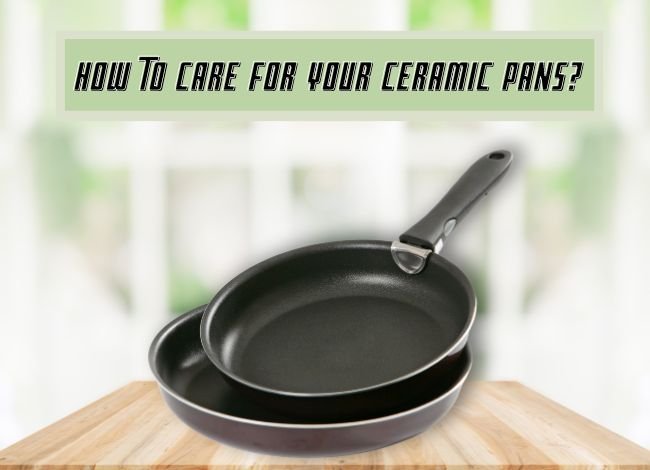Last Updated on February 7, 2024
Ceramic pans have gained popularity in kitchens around the globe due to their non-stick properties and ease of use. However, proper care is essential to maintain their functionality and extend their lifespan. This guide provides detailed insights on caring for your ceramic pans, focusing on cooking and cleaning practices that protect and preserve these kitchen essentials.
Cooking
When it comes to cooking with ceramic pans, understanding the proper techniques can significantly impact their durability and non-stick performance.
Firstly, it’s crucial to avoid high heat. When exposed to high temperatures, ceramic coatings can degrade or lose their non-stick properties. Therefore, cooking on low to medium heat is advisable. This not only preserves the coating but also ensures even cooking of your food.
Using the right utensils can also prevent scratches and damage to the pan’s surface. Opt for wooden, silicone, or plastic utensils over metal ones to avoid scratching the delicate ceramic coating. Before cooking, adding a small amount of oil or butter can enhance the non-stick feature, though it’s not always necessary due to the pan’s inherent properties.
However, avoid using cooking sprays, which can build up over time and diminish the non-stick quality. Preheating the pan slowly and avoiding sudden temperature changes can also prevent warping and maintain the integrity of the ceramic surface. By following these cooking practices, you can ensure your ceramic pans remain a valuable and long-lasting asset in your kitchen arsenal.
Cleaning
Proper cleaning is paramount to maintaining ceramic pans’ aesthetic and functional qualities. Unlike other types of cookware, ceramic pans require gentle care to preserve their non-stick surface. After cooking, allow the pan to cool completely before washing. Sudden temperature changes can cause the ceramic material to crack or warp. For cleaning, hand washing is recommended over dishwasher use. Use warm, soapy water and a soft sponge or cloth to clean the pan. Harsh scrubbers or abrasive cleaners should be avoided as they can scratch and wear down the non-stick coating.
For stubborn residues, soaking the pan in warm, soapy water for a short period before cleaning can help loosen the food particles. Rinse thoroughly with clean water to remove any soap residue and dry with a soft towel to prevent water spots. It’s also important to avoid stacking your ceramic pans without protection. Use pan protectors or soft cloths between them when storing to prevent scratches. By adhering to these cleaning practices, you can ensure your ceramic pans retain their beauty and functionality, making every cooking experience as enjoyable as the first.
Caring for your ceramic pans through appropriate cooking and cleaning practices ensures their longevity and performance. By following the guidelines outlined in this post, you can enjoy the benefits of ceramic cookware for years to come, making them a sustainable and valuable addition to your kitchen.
FAQS
- Can I wash my ceramic pan in the dishwasher?
- While some ceramic pans are marketed as dishwasher safe, hand washing is recommended to preserve the non-stick coating’s integrity.
- Is it safe to use oil or butter in my ceramic pan?
- Yes, using a small amount of oil or butter can enhance the non-stick properties, but avoid using spray oils, which can build up and degrade the coating.
- Can ceramic pans go in the oven?
- Most ceramic pans are oven-safe at a specific temperature, typically between 350°F to 450°F. Check the manufacturer’s guidelines to be sure.
- How do I remove burned food from my ceramic pan?
- Soak the pan in warm, soapy water, then gently scrub with a soft sponge. Avoid using abrasive materials that can damage the surface.
- Why is my ceramic pan sticking?
- Over time, the non-stick surface can wear down, especially if exposed to high heat or abrasive cleaning tools. Regular care and proper usage can extend its life.




